New motorcycles have always had a weird relationship with fuel efficiency. Streetbikes have been achieving miles-per-gallon ratings of 50-plus for 70 years or more. If you count Groms, Z125s, and Cubs—and we certainly do—mpg ratings regularly hit three figures. But these figures generally get ignored in favor of others. Horsepower and torque, not mpg, get the sexy spot next to the bike pic.
Enter real-world riders. They ride to work as much as they work to ride. Coasting on responsible risk-taking and the love of spending time on anything two-wheeled, they care about things like fuel efficiency. They’re in on that small secret: Motorcycles are almost as easy on the wallet as they are fun. Saving the Earth, along with whatever gas is left in it, is just part of the charm.
We’ve covered great fuel-efficient motorcycles in the past (read our article on the 5 Most Fuel Efficient Motorcycles You Can Own). But it’s time for an updated accounting of the great mpg contenders. As we all know, there are factory numbers and then there are real-world numbers. Factory mpg figures are noted as “claimed,” with all other mpg figures taken from Fuelly.com (with varying year models) for the sake of consistency and reliability.
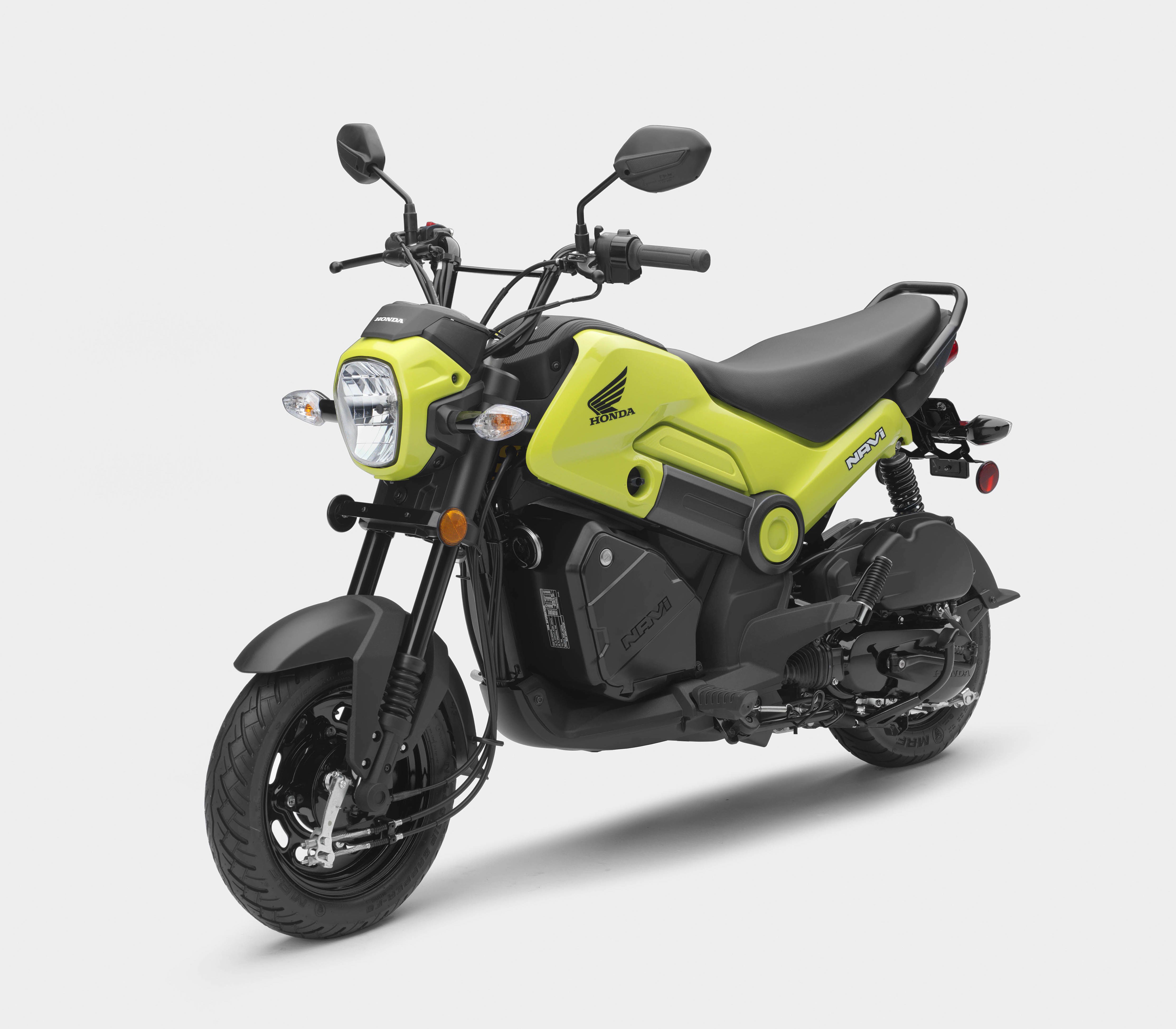
Notable: Honda miniMOTO Series
Honda’s miniMOTO segment is a master class on minimalism. Aside from their obvious diminutive charms, these bikes also claim mpg in the three-figure range. The Cub and Monkey supposedly top 188 mpg, while the Grom is content at 134 mpg. The Trail 125 ABS hangs back at 112 mpg, while the Navi gets “only” 110.3 mpg.
None of these numbers are especially new or noteworthy. Think these bikes don’t belong on a list of motorcycles? The hooligan tendencies of many Grom riders say otherwise. And in the spirit of healthy skepticism toward authority, each miniMOTO bike is a middle finger to OPEC. Ride on.
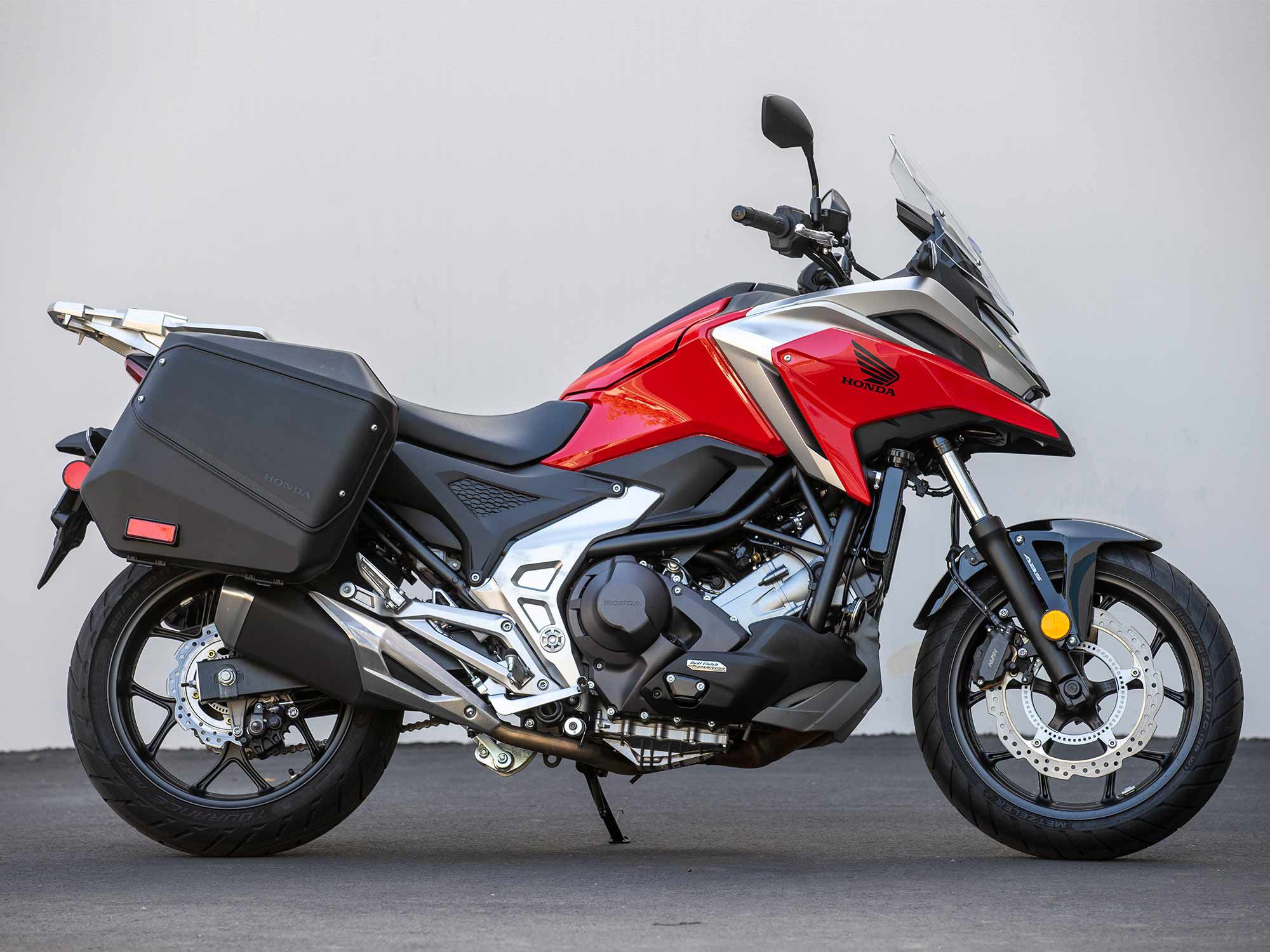
Notable: Honda NC700X/NC750X
Honda pulled a Honda back in 2012 when it released the NC700X. The “New Concept” meant taking a liquid-cooled 670cc parallel twin and tilting it forward 62 degrees, creating a 21-liter cavern (some call it “storage space”) in front of the rider that could fit up to two helmets. Ultimate practicality and sensible design suddenly seemed like a very new concept indeed.
A claimed 64 mpg gave way to a rating in the mid-to-high 50s with aggressive riding, but early reviewers easily hit 73-plus mpg without much effort, and 80 mpg isn’t out of the question. 2018 saw the upgraded NC750X increase to 745cc, with an additional 1K rpm to play with. This reduced mpg to the mid-50s with real-world riding. Still want more? Ditch the New Concept and pick up a CB500X, which averages between 62–68 mpg IRL.
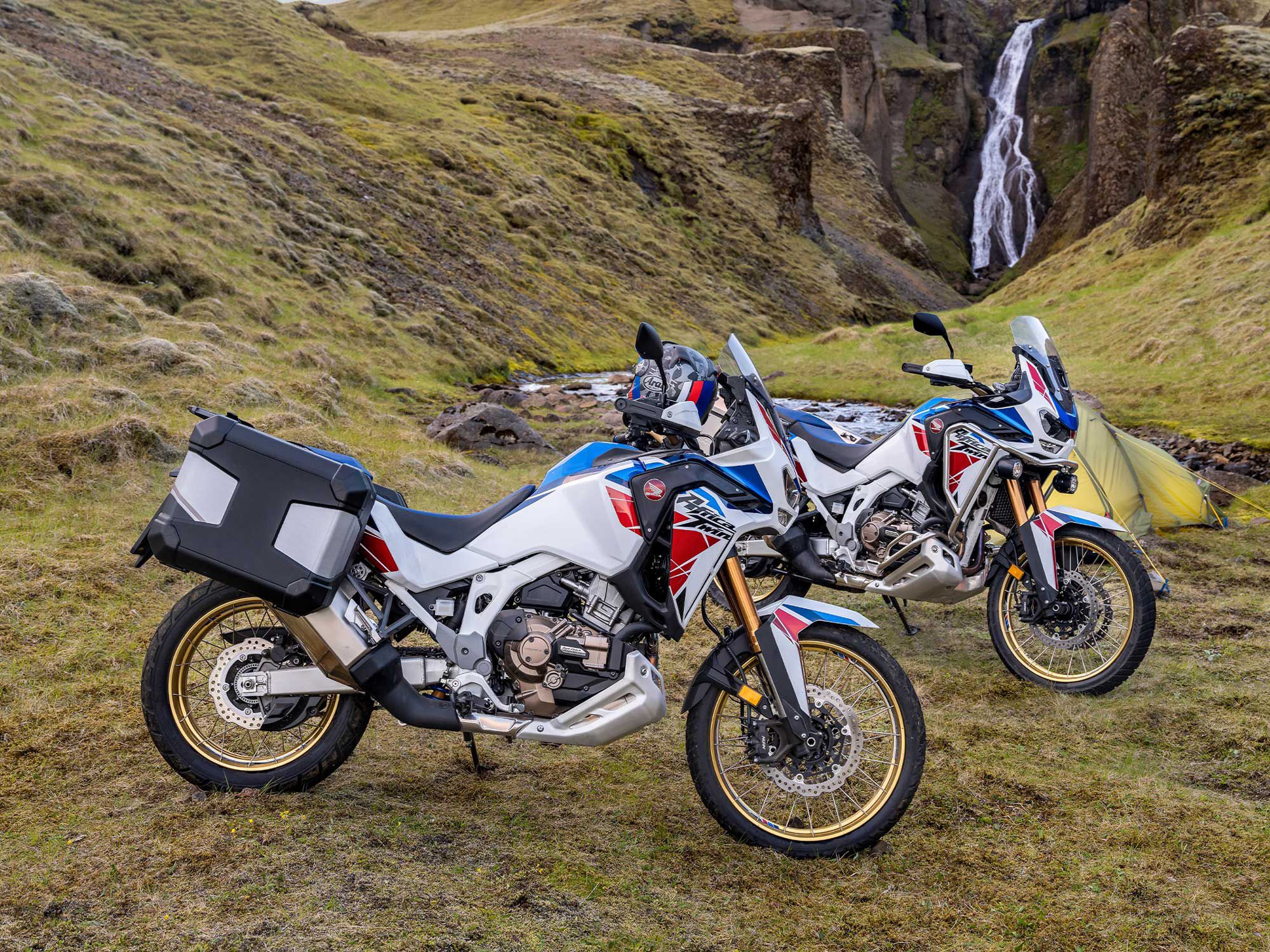
1,000cc+ Adventure: Honda Africa Twin
Among 1,000cc and bigger adventure bikes, one stood a mile ahead of the others in its class. One lowly mile, that is. The Honda Africa Twin scored a real-world 42–46 mpg, slightly ahead of the venerable BMW GS and Kawasaki Versys. Claimed numbers were few, mostly buried in dealer materials and absent from official websites or brochures. Yamaha gets a gold star for putting a claimed 43-mpg figure smack-dab in the middle of the Super Ténéré landing page.
Oddly, 1,000cc-plus adventure motorcycles seem ideal for mpg-centric marketing and messaging, or at least for mentions of mileage range and fuel capacity numbers. But those are buried in the specs. Want a number that stands out? Try 6.1 gallons. That’s the 2022 Ténéré’s fuel capacity, best in class besides the upgraded Africa Twin Adventure ES models, which hold 6.5 gallons.
Yamaha Super Ténéré ES: 43 mpg (claimed)/41–44 mpg
Kawasaki Versys 1000 LT: 42–44 mpg
Suzuki V-Strom 1000: 38–44 mpg
Harley-Davidson Pan America 1250: 46 mpg (claimed)/31–33 mpg (Cycle World review)
Ducati Multistrada 1200: 34–40 mpg
BMW R 1250 GS: 50 mpg (claimed)/41–45 mpg
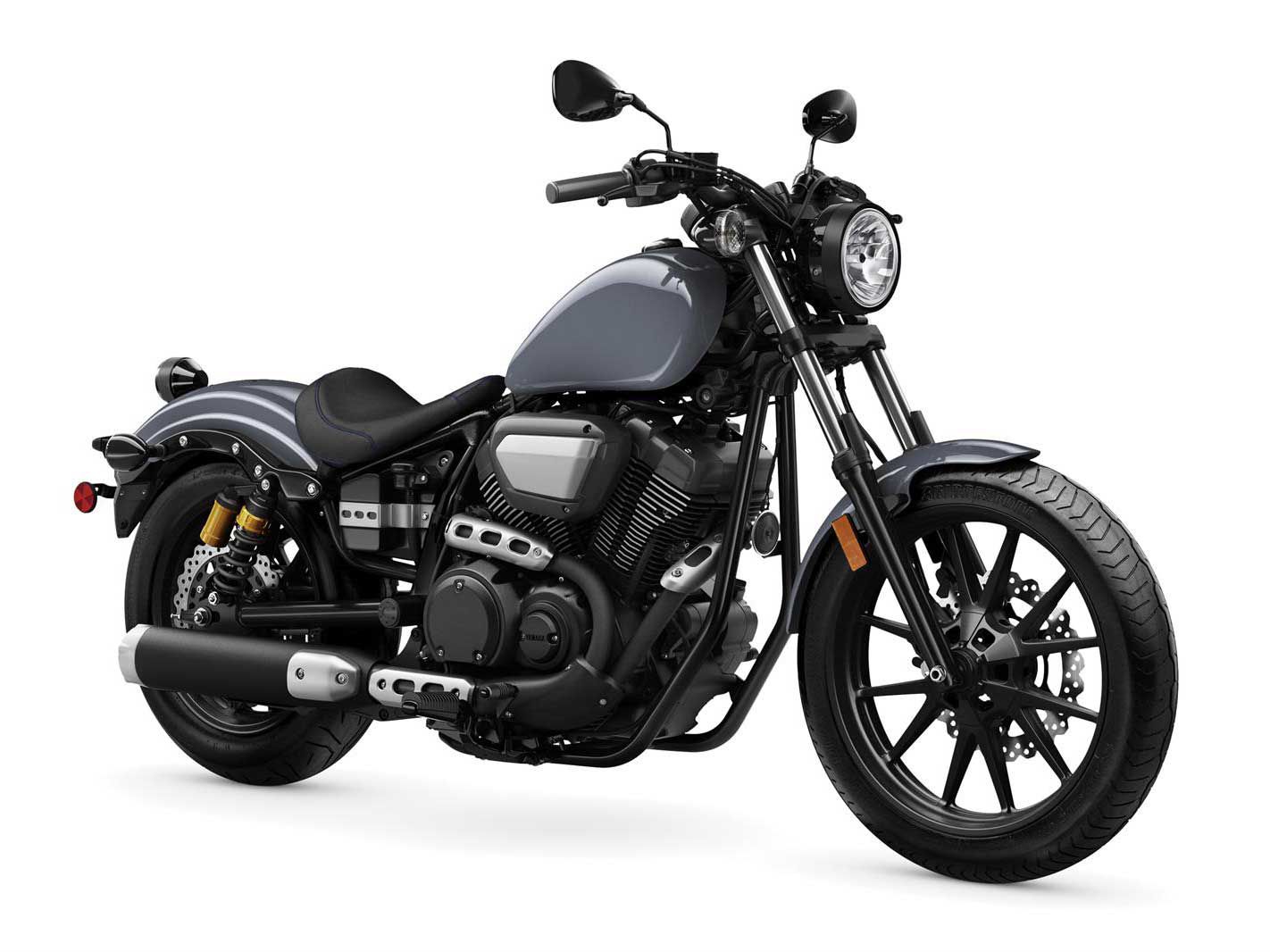
750–1,000cc Cruisers: Yamaha Bolt R-Spec
Marketing and branding materials aside, the competitive midsize cruiser category is a great place to crunch gas numbers. Specs and figures matter to many of these riders, and mpg numbers are a frequent topic on forums and boards. Coming out on top? The Yamaha Bolt R-Spec, at a claimed 51 mpg. Real-world numbers on Fuelly.com are even better, an average of 52–54 mpg.
To be fair, the figures below are similar, no real surprises. But again, another number tells the story: 5.3. That’s the size of the Kawasaki Vulcan 900 fuel tank, in gallons. That’s 2 whole gallons more than the Scout, XL883, and Bolt. No replacement for displacement, indeed.
Yamaha Bolt R-Spec (942cc): 52–54 mpg
Honda Shadow Phantom (745cc): 48–53 mpg
Honda Rebel 1100 (1,084cc): 45 mpg
Suzuki Boulevard C50 (805cc): 46–48 mpg
Kawasaki Vulcan (903cc): 44–47 mpg
Indian Scout Sixty (999cc): 44–47 mpg
Harley-Davidson XL883 (883cc): 43–50 mpg
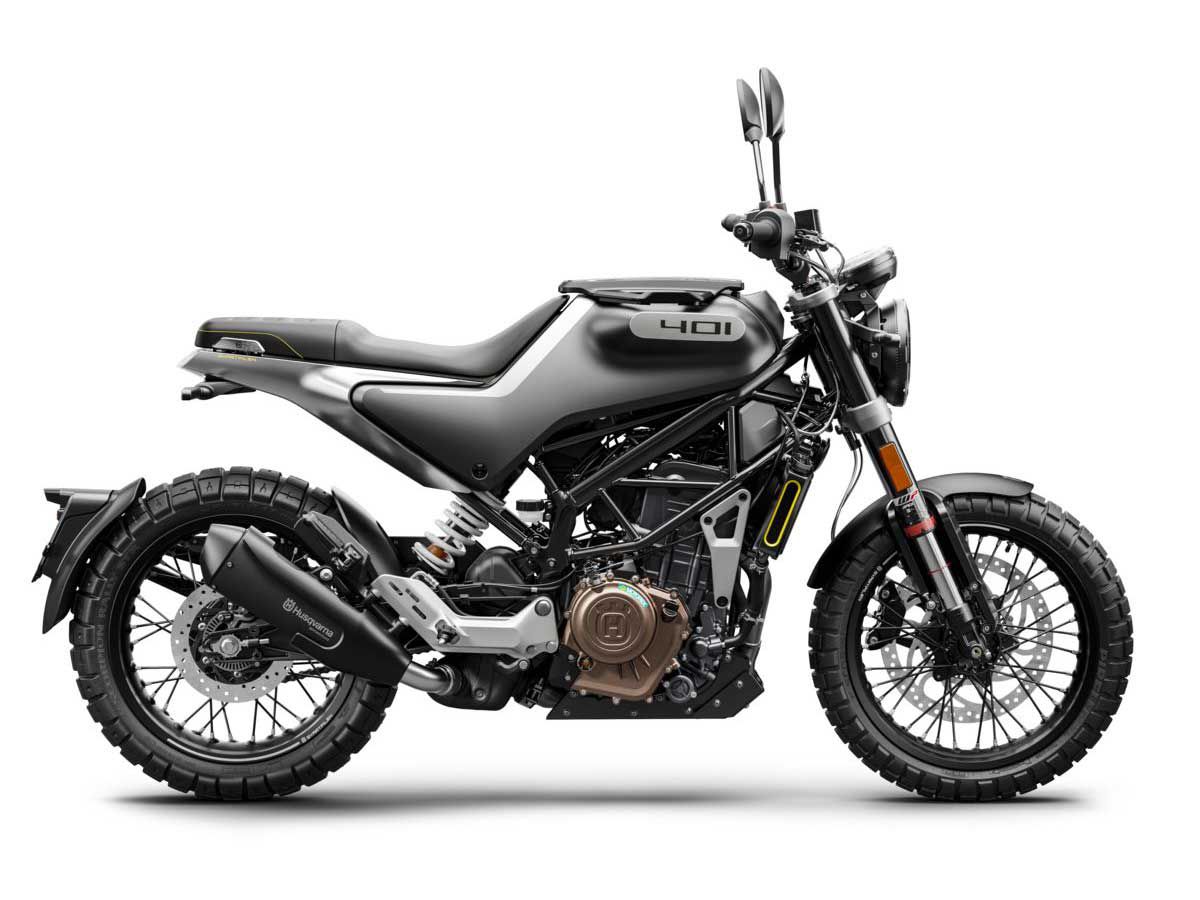
Notable: Husqvarna Vitpilen 401
Does the average Vitpilen owner care about mpg? Did they look at a bike with exactly two practical accessories (footpegs) and say, “Gee, I bet it sips gas too”? Likely not. But there’s no hiding it. Fuelly.com lists an average of 59 mpg, with some owners hitting 73 mpg. Twist your wrist all you want; just try getting below 40 mpg. The liquid-cooled single-cylinder 373cc powerplant is no heavy drinker.
They thought they were showing off rad moto-design while air-washing their beards and their faded buzz cuts. But Vitpilen riders were secretly saving the Earth too. Ah, the irony. But in all fairness, the fun-per-dollar ratio also includes fuel efficiency. It wouldn’t be a (sorta) Swedish-esque motorcycle otherwise. Skål.
Honorable mentions to the KTM 390 Duke, which averages 57–60 mpg.
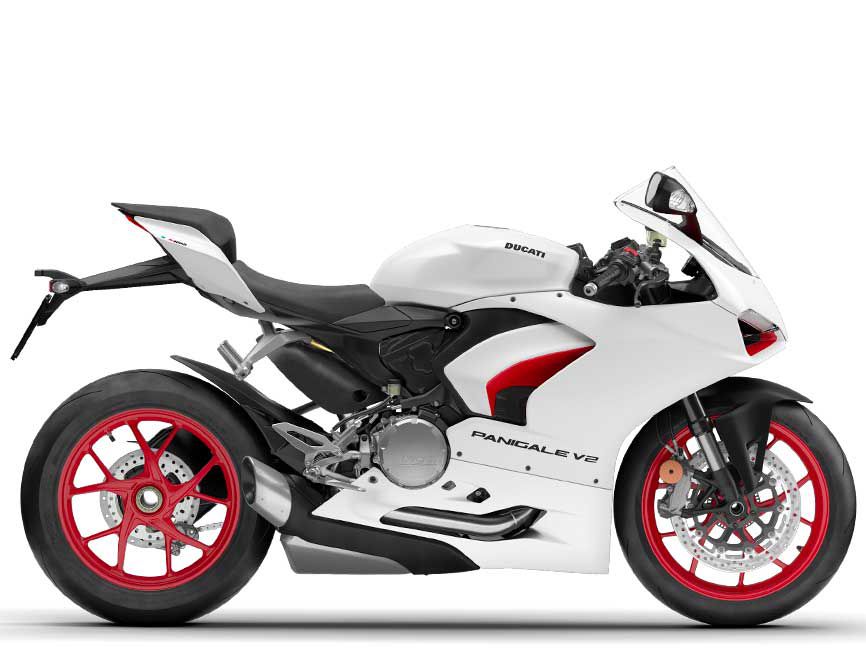
1,000cc Sportbike: Ducati Panigale V2
Searching for the mpg numbers of sportbikes is basically pretty pointless. Yet eclipsed by all the stoplight-revving and throttle-twisting are real-world reports and even an official number or two. The Ducati Panigale V2 earns a claimed 39.2 mpg, with 45–50 mpg reported by Fuelly.com contributors. As it’s the lone twin in a sea of fours, this makes sense.
This data exercise disappears the second anyone blips a throttle. But mpg could be part of sporting fun, for however long as internal combustion is still with us. Forget stoplight-racing; just compare instant-fuel-consumption readings after 20-second burnouts. Sporting fun for everyone.
Suzuki GSX-R1000: 38–41 mpg
Yamaha YZF-R1: 33 mpg (claimed)/37–41 mpg
Honda CBR1000RR: 36–40 mpg
Kawasaki Ninja ZX-10R: 35–38 mpg
BMW S 1000 R: 35 mpg (claimed)/36–38 mpg
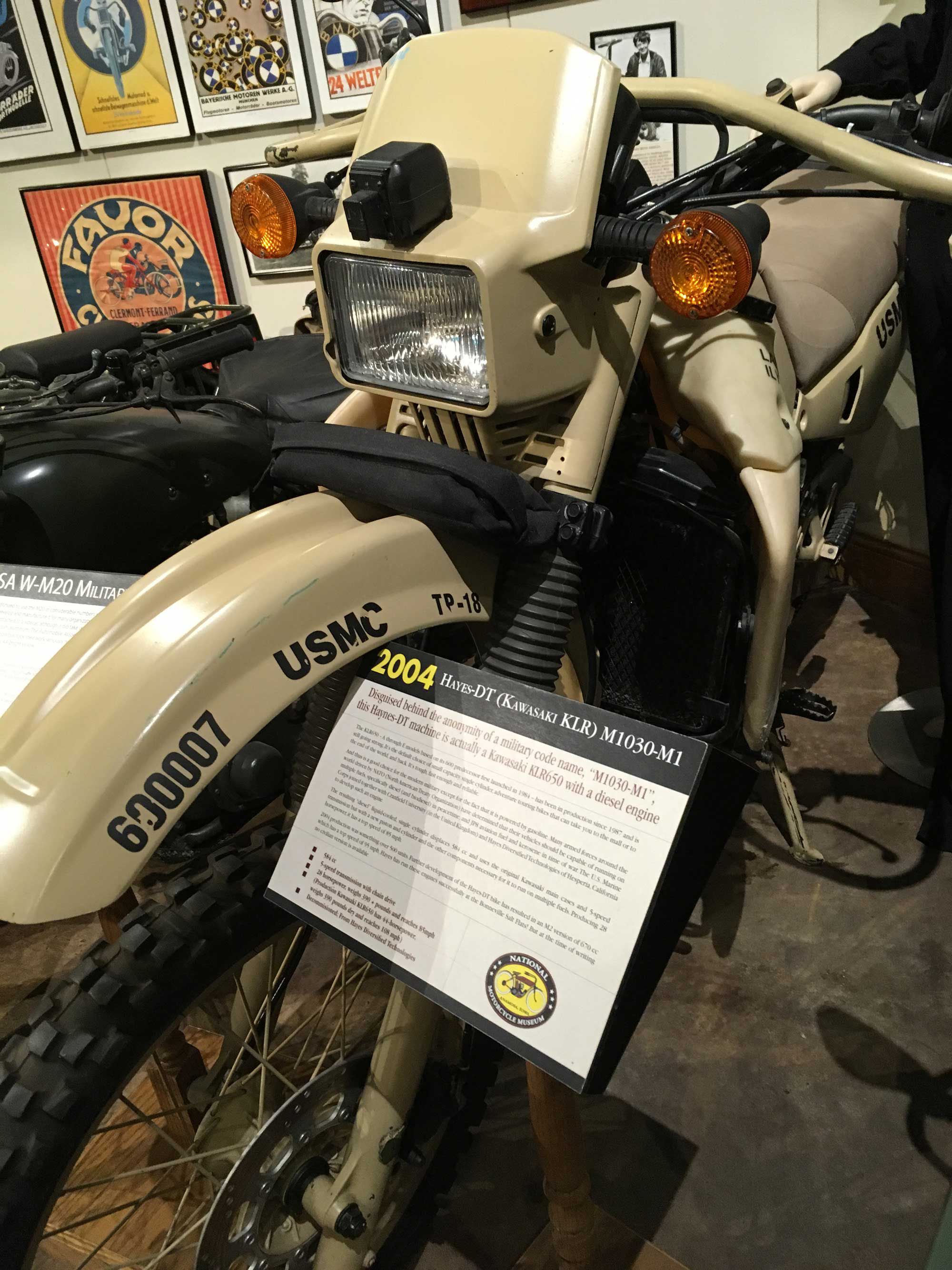
Honorable Mention: Hayes Diversified Technology M1030M1
You’ll have an impossible time finding one, but it deserves a mention. Built using a KLR650, the charmingly named HDT M103M1 served with the Marines and several NATO-country fleets. As such, it had to be able to run, as all military vehicles must, on “battlefield-ready fuels” like diesel or jet fuel. Bonus: It also runs on plain kerosene. With diesel, it gets a claimed 95-plus mpg.
The magic comes from a naturally aspirated liquid-cooled DOHC 584cc single-cylinder engine with four valves per cylinder. It makes 28 hp and gets a wide range of torque from 1,500 to 7,000 rpm. Anamosa, Iowa’s National Motorcycle Museum hosts the example seen above, with heat-shielding panniers and bodywork helping the bike to evade infrared surveillance.
Singles & Twins, 300cc: BMW G 310 GS, Honda CBR300R, Honda Rebel 300, Kawasaki Versys-X 300, Kawasaki Ninja 400
Quite a bit of ink and pixels have already gone to these fine bikes, so let’s jump right to the figures.
BMW G 310 GS: 64–66 mpg
Honda CBR300R: 71 mpg (claimed)
Honda Rebel 300: 78 mpg (claimed)
Kawasaki Versys-X 300: 60 mpg
Kawasaki Ninja 400: 55–59 mpg
Source: MotorCyclistOnline.com
